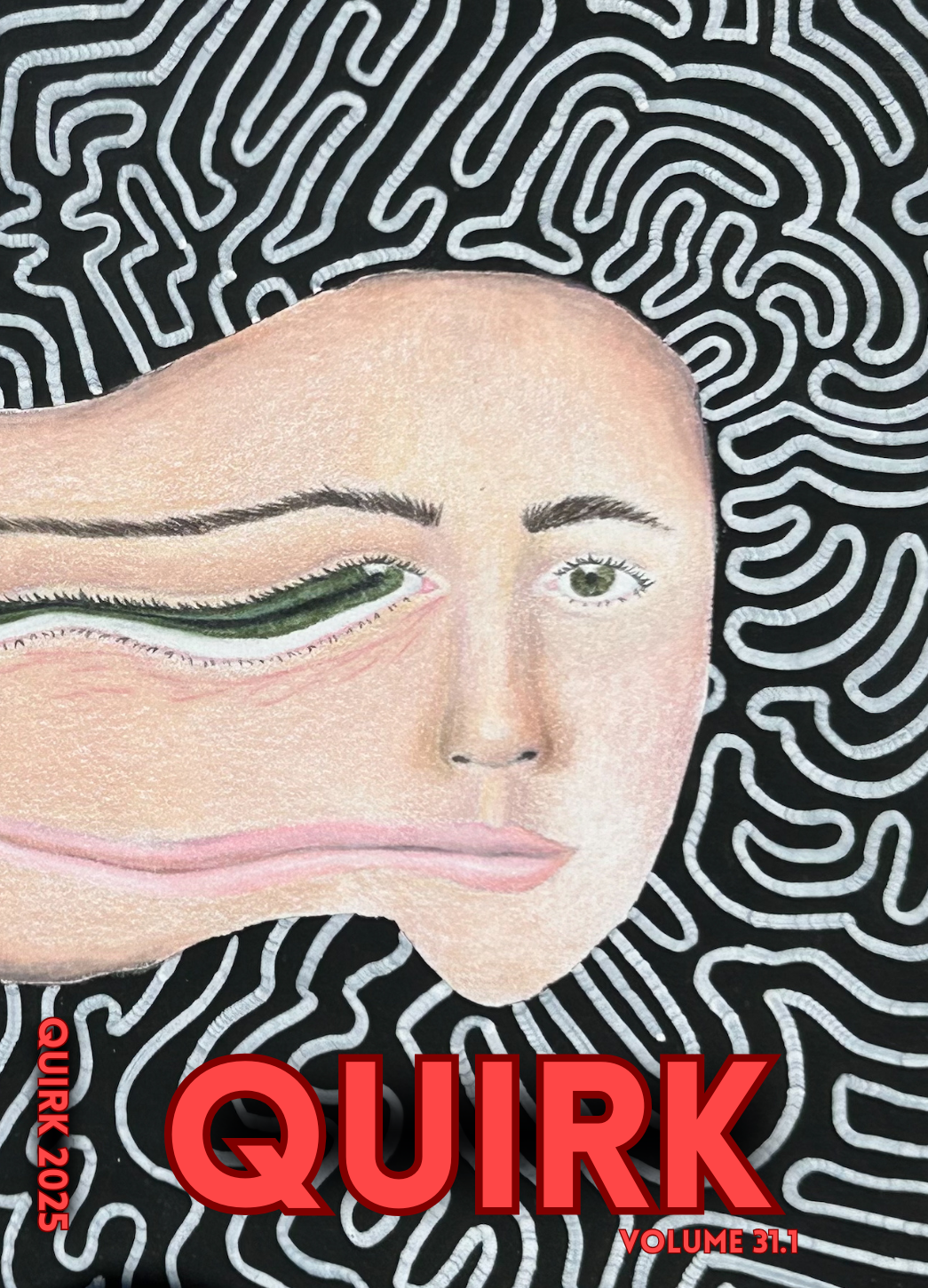ENGL 3365: Editing & Publishing
The Course
In Editing & Publishing, students become the editors of Quirk, UIW’s national undergraduate literary journal. In doing so, we learn how to run a magazine, solicit work from undergraduate writers and artists all over the country, gain vital editing skills, learn web design by publishing Quirk Online, and master layout and cover design through our print version of Quirk, which we publish, sell, and ship at the end of the Spring semester. Editing & Publishing is also a way to work with young writers in high schools while receiving service hours, and each year our student-editorial team develops new ways to expand our reach and vision. Past editorial teams have added features like:
—interviews with writers;
—audio readings of published works;
—Spanish language submissions and publications;
—American Sign Language submissions;
—themed categories;
—community partnerships with area elementary schools, teaching literacy and publishing the work of young writers.
You can read more about Quirk and all the recent new developments below.
About Quirk
UIW’s literary journal, Quirk, continues a UIW tradition that started about 30 years ago. Before it existed in its current form and with its current name, three universities in San Antonio–UIW, Our Lady of the Lake, and St. Mary’s–collaborated on this journal and called it The Thing Itself. When the collaboration ended in 1983, Dr. Jo LeCoeur continued the journal here on campus and named it Expressions. In 1995, the journal then became Quirk, but it was “A Journal of Collegiate Inquiry and Debate” that over the years came to focus more on the creative arts and include visual arts (from: History of Quirk; UIW English website).
Managed each spring semester by student-editors in Editing & Publishing (ENGL 3365), Quirk continued this tradition of publishing a print journal featuring the creative work of students, faculty, staff, and alumni from UIW. Genres included prose, poetry, visual art, and sometimes extended to one-act plays and other works.
Then came the spring of 2020. Obviously, the pandemic changed much about how all education and projects such as Quirk operated. Instead of allowing this to “downgrade” our output, however, we used the 2020 Editing and Publishing course to expand our outreach in two new and exciting ways:
1. We built an online version of Quirk, which extended our readership and range of publication possibilities immensely.
2. We took Quirk national. Instead of confining our scope to UIW, we became a national undergraduate journal welcoming submissions from all accredited, degree-granting institutions in the United States.
In 2021, we continued with this expansion by using the new online format to do things that couldn’t be done in print. In addition to fiction, poetry, nonfiction, and visual art, we accepted video works in American Sign Language. We also established two social media outlets for Quirk on Twitter and Instagram.
Quirk 2021 championed our most diverse array of creative voices yet, with emerging writers and artists from colleges and universities across the country—from NYU to ASU, from University of Cincinnati to our own UIW, and everywhere in between. Undergraduate creators tackled issues such as mental health, trauma, joy, relationships, social issues, spirituality, and sometimes just spun a good yarn.
New features that were also added in 2021 included:
—audio recordings of prose and poetry works read by the authors;
—editorial comments by our student-editors as to how they chose work;
—artist and writer interviews about the creative process and inspiration;
—ASL performance.
Finally, with the Editing & Publishing course back in person this spring, Quirk 2022 became the first Quirk to include both the online journal and the print. In expanding the reach and breadth of the magazine, this year was no different. Ways we grew this year included:
—an expanded outreach list to over 600 creative writing and English programs announcing Quirk as open to submissions from undergraduates;
—extending our submission pool to accept works in both English and, for the first time, Spanish;
—beginning to accept works from UIW sister schools internationally, particularly from our Mexico campuses’
—as a result of these expansions, we received more submissions in every category than any previous year (and in less time), resulting in an increasingly diverse array of voices;
—and because of this diversity, we accepted our broadest range of writers and artists to date, hailing from Research-1 schools to the Ivy League to small community colleges—29 different institutions in all.
—we also published a themed section, decided upon by our editors; this year’s theme was “Growth in the Midst of Struggle”;
—finally, because 2022 was the first year since we had extended submissions nationally that we were publishing physical copies of the journal (in addition to the online journal), we also developed an online ordering and delivery system. So, for the first time, anyone can order copies of Quirk through our website, and physical copies of Quirk will be sailing out into the world to sit on hundreds of shelves across the country and beyond.
For more information, contact the faculty advisor: Dr. David Armstrong at darmstro@uiwtx.edu

